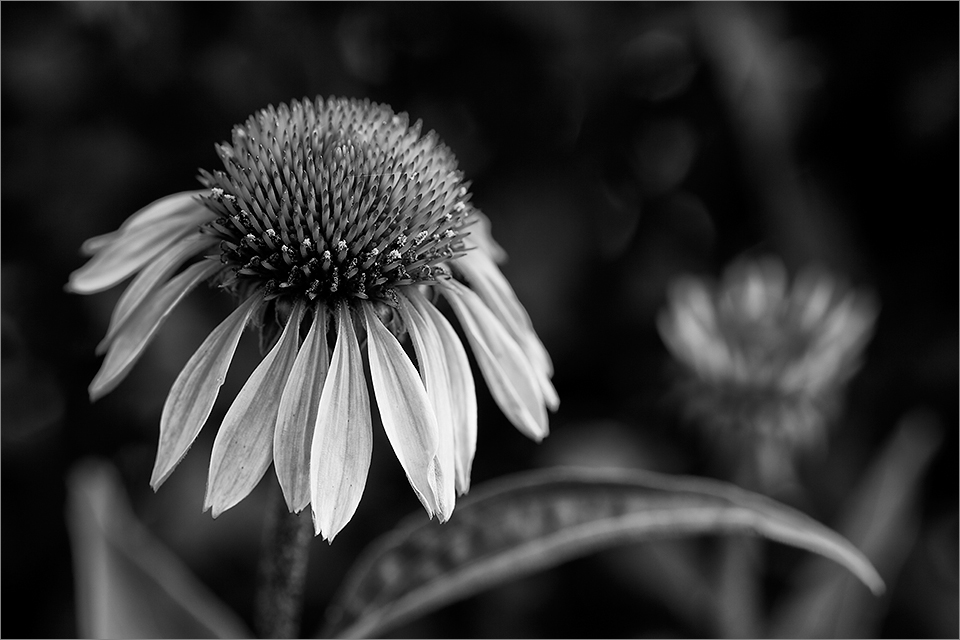
We live in a world filled with color. We are surrounded by color and see it everywhere. To borrow a few words from Louis Armstrong’s classic 1967 tune, “What a Wonderful World,” we see color in everything around us, whether it’s “trees of green, red roses too, skies of blue and clouds of white,” or in “the colors of the rainbow so pretty in the sky.”
Life would be awfully dull and boring if we lived in a world where there was no color, and where everything could only be seen in black and white. Yet, there is something to be said about seeing things in black and white, particularly when it comes to photography.
Black and white photographs have a timeless, lasting quality to them. They can be powerful, thought-provoking, and inspiring. These are some of the reasons why I find them so appealing and interesting to look at.
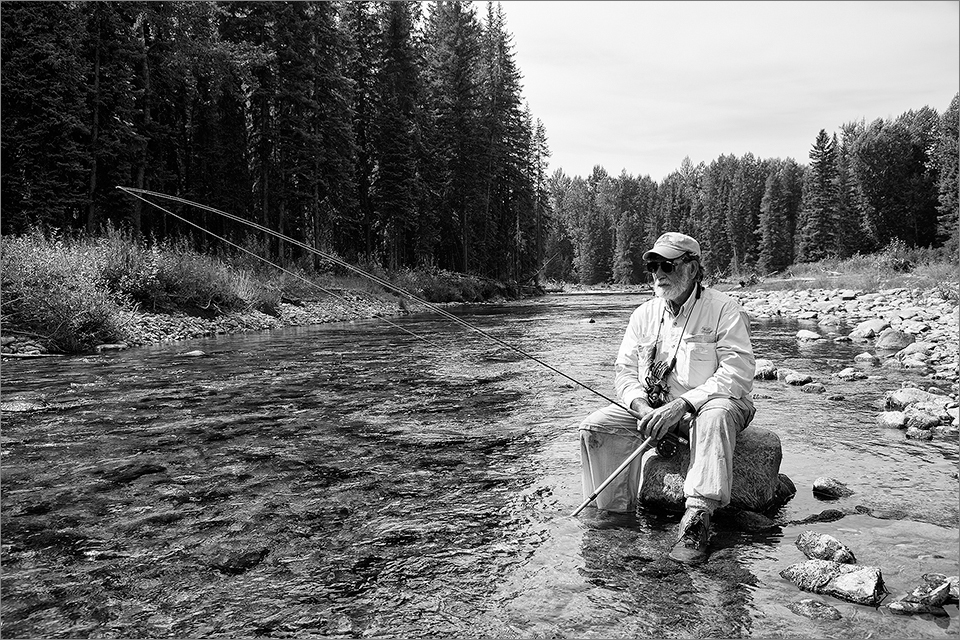
Beckoning Waters
Black and white photography is all about capturing highlights and shadows, brightness and darkness. Rather than focusing on colors, which can sometimes be distracting, your eyes are drawn to areas of the image containing forms, shapes, textures, and tones. Removing color from your photo can also help draw attention to the parts of the image you would like viewers to concentrate on most.
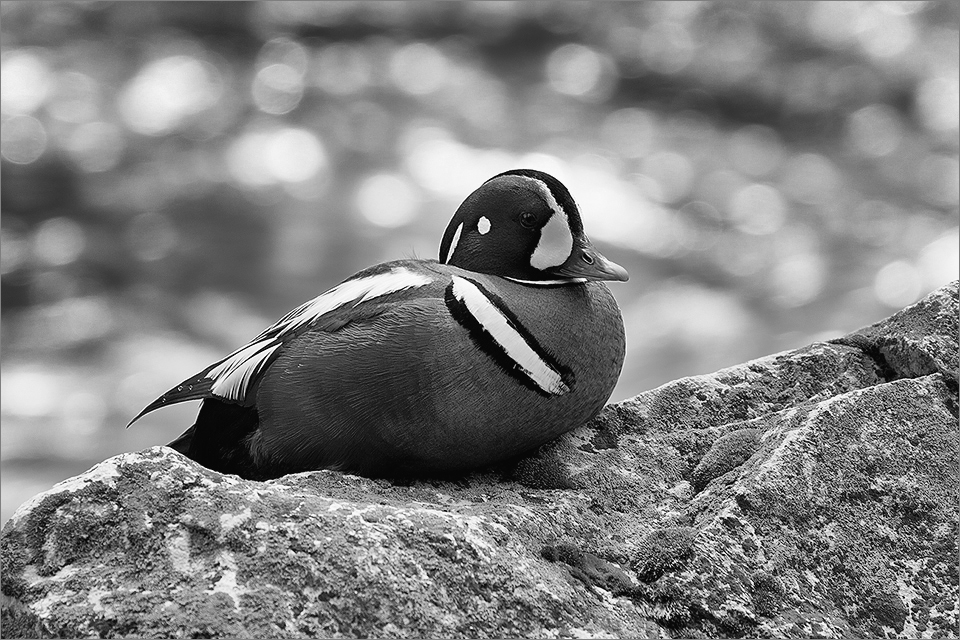
Crowsnest harlequin
The term black and white is really a misnomer. While there may be areas in an image that are completely black or totally white, most parts are made up of various shades of grey. We should probably be calling them greyscale photographs, but most people are happier saying black and white. That’s tradition for you, and I’m okay with it.
While many of today’s digital cameras can be set to capture an image in B&W, most photographers shoot in color, then convert their photos to B&W in post-processing.
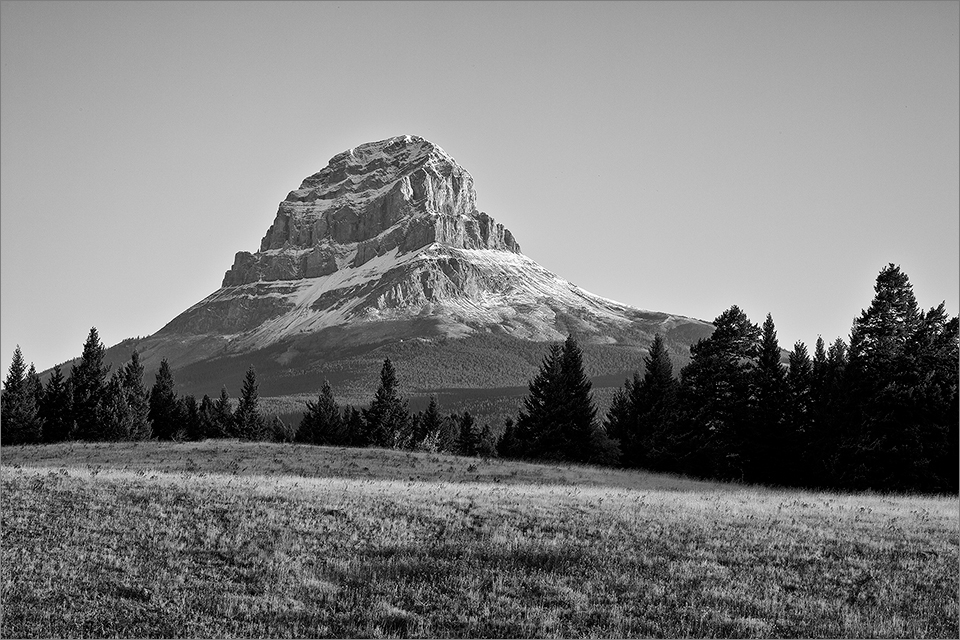
Crowsnest Mountain
In order to make good B&W photos, you need to train your eyes to see in black and white. Being able to visualize what something will look like in B&W is key. It’s not always an easy thing to do, especially when everything standing before your camera lens is in color. I try to look for scenes containing strong, well-defined lines, shadows, and shapes. You can create nice contrast if there are some portions of the photo that are almost black and some that are almost white. Patterns and textures are other things to search for when taking B&W photos.
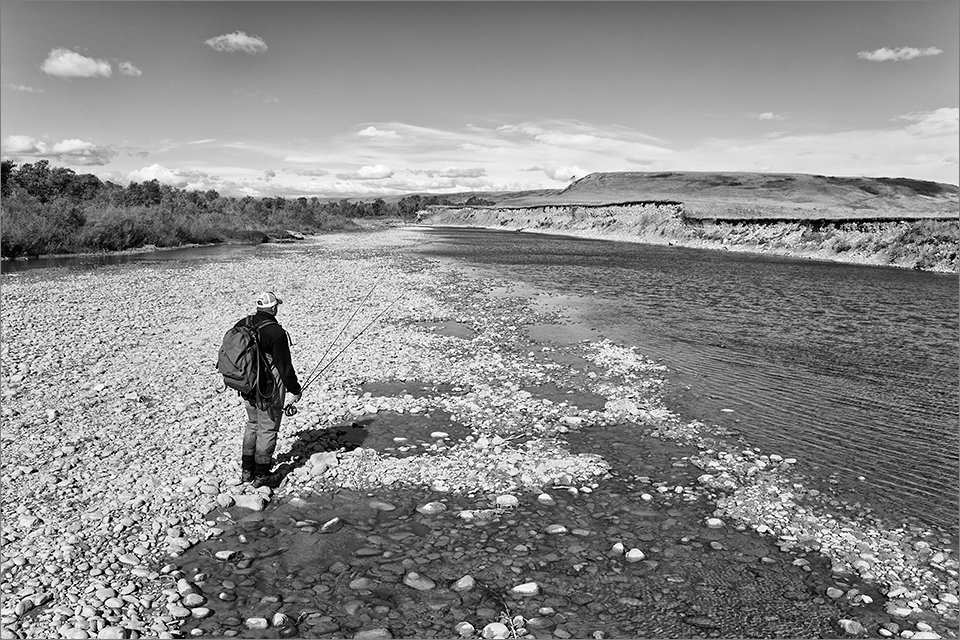
Walk & wade fishing
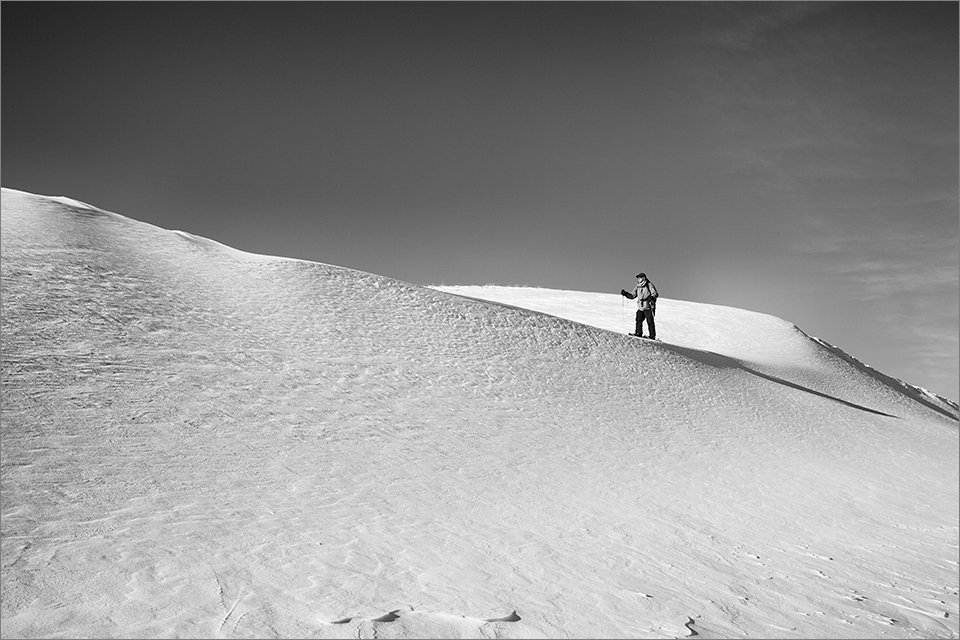
Snowshoeing in Crowsnest Pass
Final Thoughts
I have always liked black and white photography. It’s how I started taking pictures. I owned my first camera, a Kodak Instamatic, when I was ten years of age. By the time I was fourteen, I had taken a photography course in junior high school. In class, I learned to use a Pentax SP500, 35mm SLR camera. I also learned to develop and process B&W film and made gelatin silver prints in the small, darkened projection room located high above the school’s gymnasium. I found it captivating to watch an image come to life, as it appeared on a blank piece of paper immersed in a tray of developer.
Before the end of the school year, I had set up a makeshift darkroom in my bedroom at home. It contained all the required equipment, including a Vivitar enlarger, film developing tanks, and trays. I kept myself busy by taking photos, processing film, and making prints. My home-based photo lab was short-lived, though, as the cost of chemicals, paper, and other darkroom supplies, became too high to maintain on a fourteen-year-old’s budget. Despite this, my interest in photography did not wane. I continued to take photos but sent the film to a professional lab for processing. Those were the days!
I’m glad we live in a world of color but it’s nice to be able to see it in shades of grey, at least once in a while.
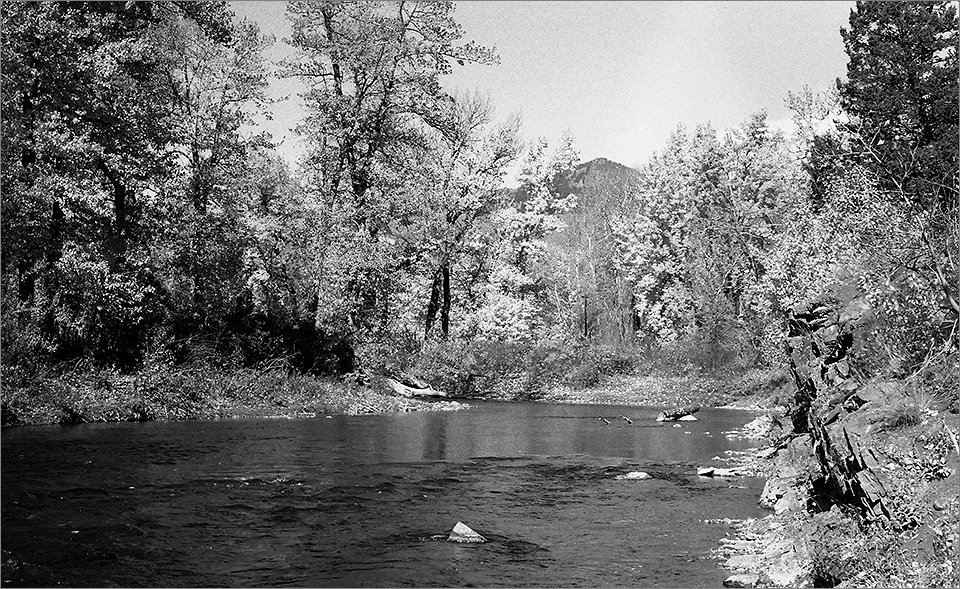
Crowsnest River – October, 1986
Kodak Tri-X 400 B&W Film
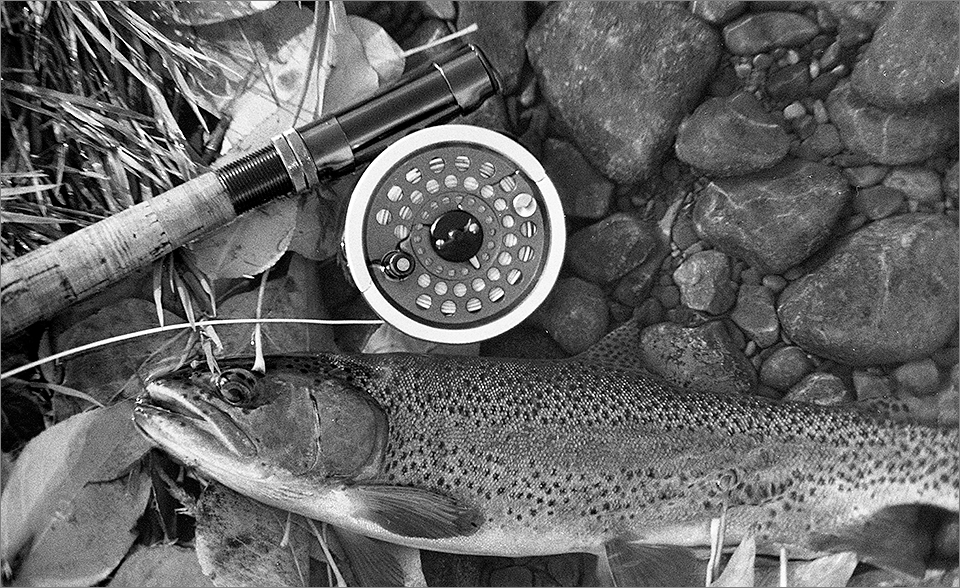
Crowsnest River rainbow trout – October, 1986
Kodak Tri-X 400 B&W Film
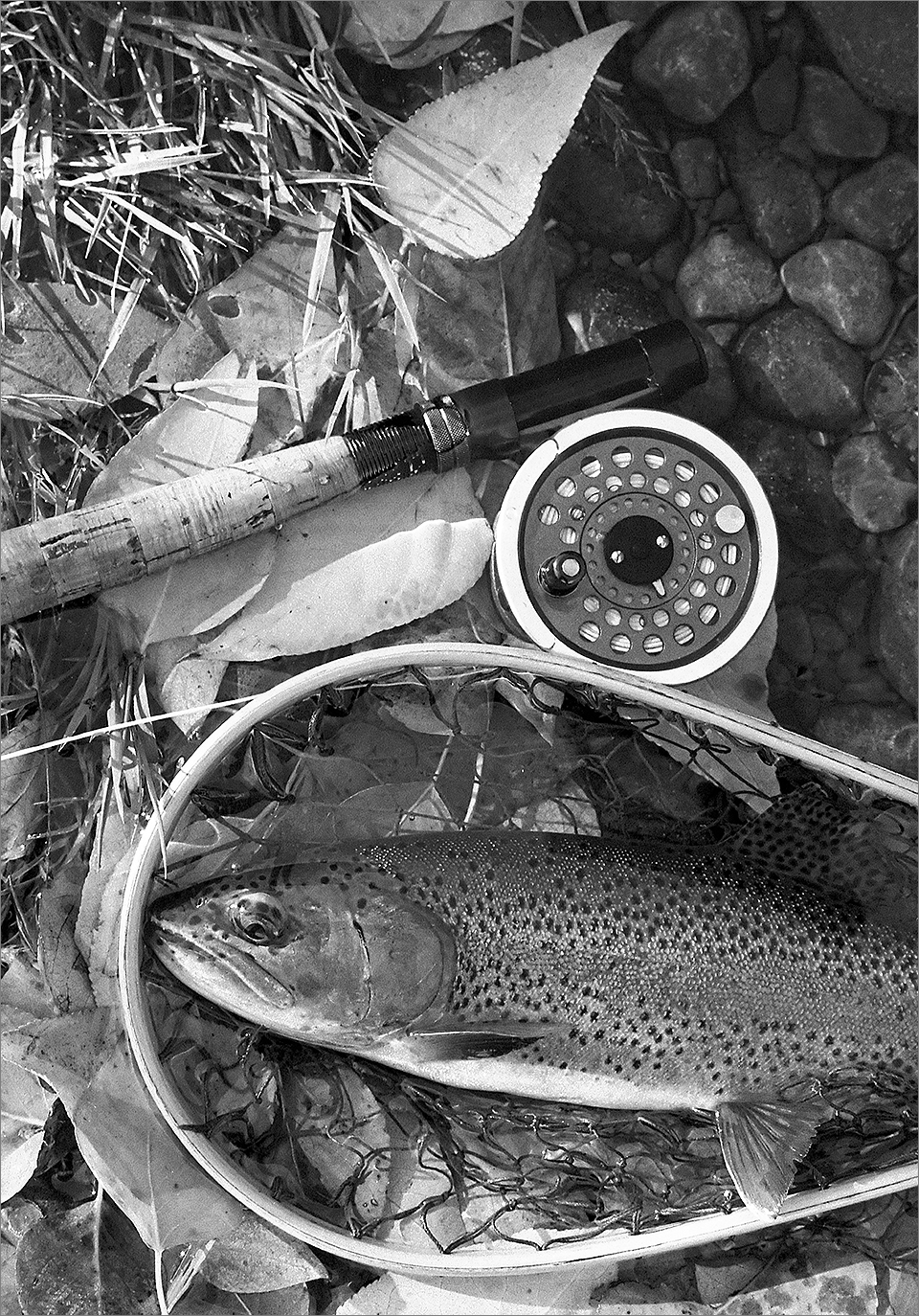
Crowsnest River rainbow trout – October, 1986
Kodak Tri-X 400 B&W Film
Article Notes & Comments: The photo appearing at the top of this article is of a purple coneflower (Echinacea purpurea) and was taken in my backyard. The last three photos were taken in 1986 with a Pentax SP500 camera, the same model as the one I learned to use in school in 1972. I purchased it in 1986 and still have it.
A friend and fellow angler/photographer, Robert Garnier, publishes a great fly-fishing blog, Trout on Dries. Robert’s posts are usually about his excursions on the trout streams located in southwest Alberta and other places, and are highlighted almost exclusively with B&W images. A link to his site is located in the sidebar. Enjoy!

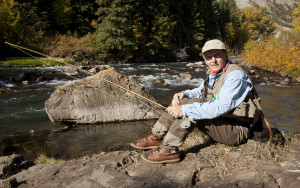
4 Comments
Vic: Nice post about B&W photography. My favorites: coneflower; walk, wade, angler pic(I know that spot) (like the long perspective of it…could be a cover mag pic in an adventure fishing publication) ; and my favorite, favorite: snowshoeing….like the simple composition, shadows and light and the way the second drift is illuminated…and the trace of clouds on right side…good eye! Hey, and thanks for the plug/comments…almost missed it at end of post.
robert
Hi Robert,
Glad you enjoyed my B&W photography post. I figured you would recognize the “walk & wade fishing” photo location. I was there a couple times in the past two weeks. Pretty slow fishing. I’ll go back again next season. The snowshoeing photo was from last winter. It won’t be long, though, before we’ll be out enjoying the snow again. I enjoyed your post today. I see you have already been out in the snow. It’s great you were able to do a fish rescue. Maybe in 2-3 years you will see one of those rainbows again and be able to take another photo. Thanks for commenting today!
The photographs are wonderful and the application of the black and white mode makes them really special. Yes, color is great but sometimes the moment or place is captured more effectively by the contrast achieved using black and white. I’m so glad to be included in your work.
Hi Herb,
Thanks for being a great model on Michel Creek, and for being so patient while I was taking pictures. I couldn’t think of a nicer person to spend the day with. Getting photos of you was a bonus!